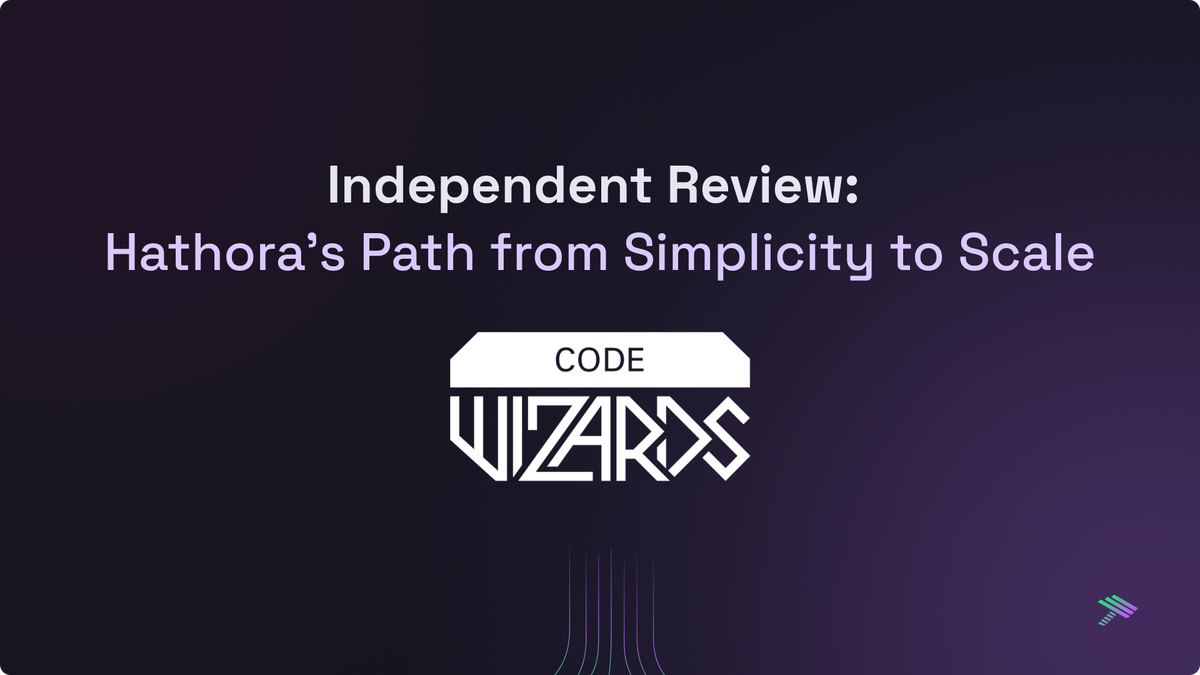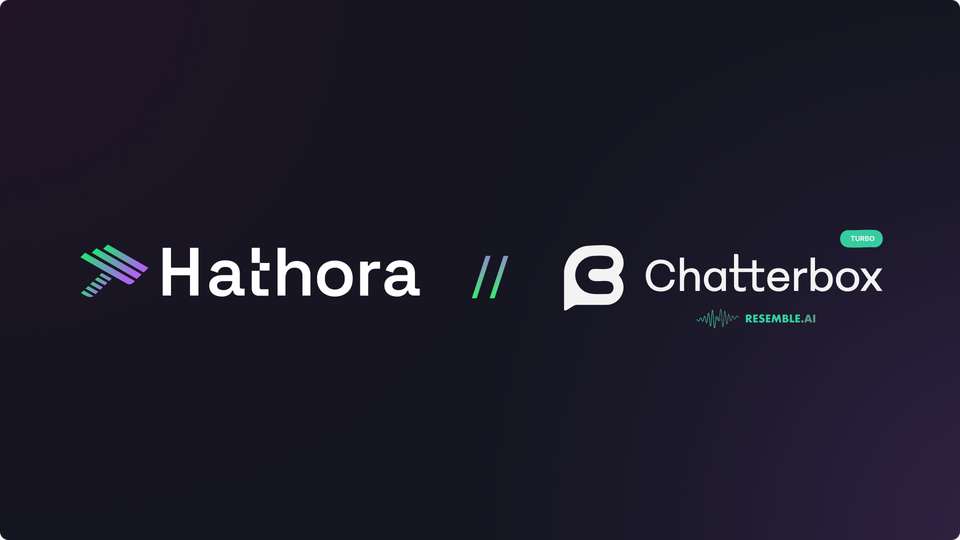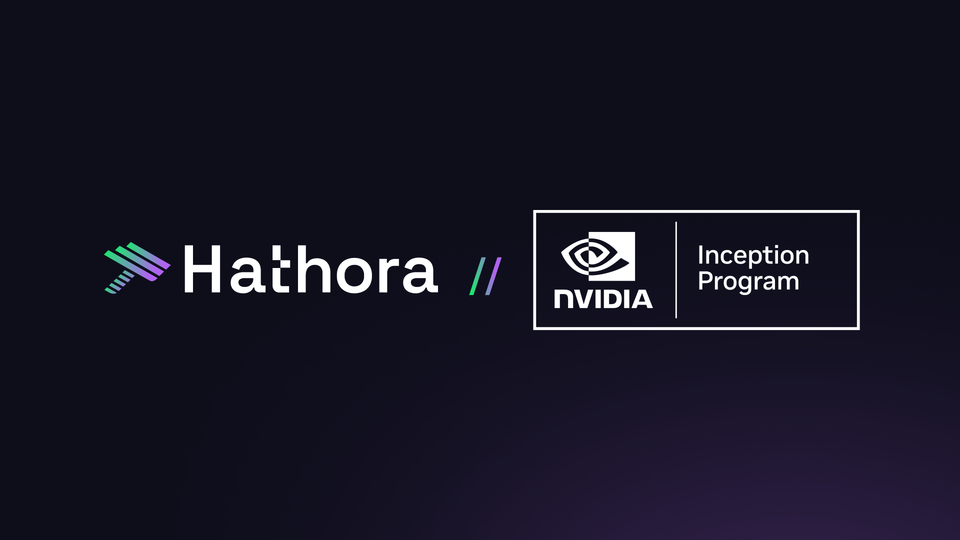Independent Review: Hathora's Path from Simplicity to Scale

When Code Wizards set out to evaluate our multiplayer infrastructure platform, they conducted a rigorous technical assessment. Their October 2025 whitepaper, "Hathora: Code Wizards Technical Review," put our platform through comprehensive testing — deploying Unreal Engine Lyra servers, spinning up JavaScript-based multiplayer games, measuring real-world latency, and stress-testing our autoscaling under load.
The result: an independent, technically detailed assessment of where Hathora delivers today, and where we're pushing next. As we expand to offer more types of compute, we never want to lose sight of our deep roots in gaming.
For those who want the highlights without reading the full technical report, we've pulled out the key findings below. You can grab the complete whitepaper here. To keep the Code Wizards fidelity, we left all of the UK spellings, even as a USA based team.
A Platform Built for Developers, Not DevOps
"The deployment experience exceeded expectations. Initial server deployment took about 10 minutes with a container ready to go, or roughly 1 to 2 hours to build and containerise a sample from scratch."
That's the essence of Hathora — we've built multiplayer infrastructure that feels like developer tooling, not operations software.
Instead of managing load balancers or writing Kubernetes manifests, you configure rooms — a model that mirrors how games are built and played. Code Wizards highlighted how this approach aligns with multiplayer workflows:
"Developers focus on game sessions rather than server instances and load balancing. This aligns naturally with existing multiplayer architecture."
For teams new to containerization, Code Wizards noted that Hathora offers direct onboarding support through 45-minute technical calls, providing hands-on assistance with Docker workflows and deployment. This personalized support significantly reduces the learning curve compared to competitors where initial setup typically takes 2 to 4 hours just for networking configuration.
Hybrid Compute Done Right
The review spent considerable time on our Elastic Metal hybrid model — combining bare metal performance with cloud elasticity.
"The hybrid model, which combines a bare metal baseline with cloud overflow, can reduce costs when baseline utilisation stays high and bursts are short."
In their tests, Code Wizards confirmed what our customers already see in production:
"In our runs we compared Hathora bare metal baseline to the same workload bursting on Hathora's cloud capacity and saw meaningful reductions on the bare-metal portion."
The data backs this up: Code Wizards found that bare metal capacity can be more than 60% cheaper than equivalent cloud instances for the same server class. Their conclusion: the hybrid model delivers real cost savings when tuned correctly — and it keeps performance predictable even during traffic spikes.
The whitepaper notes that optimal savings depend on your game's specific profile: CPU-per-player, bandwidth-per-player, average session length, and traffic patterns. Games with steadier, CPU-bounded workloads see the highest bare-metal utilization, while spiky or bandwidth-heavy games burst to cloud more frequently.
Fleet Management that Feels Effortless
Enterprise differentiation was another focus. The reviewers were struck by how seamlessly Hathora transitions from shared to dedicated infrastructure:
"What impressed most about the fleet experience was how completely automatic it felt from a developer perspective. Despite the underlying complexity... the deployment process remained identical to the basic tier."
That's intentional. Every Hathora customer — from indie studios to AAA teams — gets the same consistent experience, whether running on shared hardware, dedicated nodes, or their own cloud (BYOC).
Code Wizards highlighted the intelligent scaling behavior: the platform targets 75-85% utilization by default, prioritizing cost-effective bare metal and only bursting to cloud when necessary. When demand decreases, underutilized cloud capacity is reclaimed quickly, with new cloud capacity coming online in under two minutes.
Visibility Without the Overhead
Observability and debugging are often where multiplayer platforms fall short. Code Wizards called out Hathora's approach to metrics and logs as a differentiator:
"The platform provides comprehensive monitoring without requiring teams to implement custom telemetry solutions."
The process identification system particularly impressed the reviewers. External match identifiers can be linked to room creation, allowing rapid correlation between player reports and specific server instances through both the Console and programmatic API access.
For enterprise operations, Prometheus Remote-Write compliance is a significant capability:
"Prometheus Remote-Write compliance allows consolidation of Hathora infrastructure metrics with external systems like matchmakers, backend services, and player analytics platforms."
In other words: everything is visible, nothing is hidden, and it all plays nicely with your existing monitoring stack. On a related note, logs remain accessible for both active and terminated processes — crucial for post-incident analysis.
CI/CD That Fits Your Workflow
Hathora integrates directly with CI/CD tools like GitHub Actions and Jenkins — a detail that resonated with the Code Wizards team:
"Existing Docker-based workflows translate directly to Hathora deployment patterns, with minimal script modifications needed for automated deployment."
For studios shipping weekly patches or running multi-environment pipelines, that level of frictionless integration matters. The CLI-based automation system supports scripted workflows from build creation to deployment activation, integrating with existing development pipelines without extensive modifications.
Security and Support Built In
The whitepaper evaluated Hathora's security posture and enterprise support capabilities.
Key findings:
Security: DDoS protection is built-in at all tiers, with baseline protections against common attack patterns. Enterprise customers get additional controls, including the ability to provide trusted player IPs for rate-limiting during active attacks. Role-based access controls separate billing, deployment, and read-only access — preventing junior developers from accidentally accessing production systems or incurring unexpected costs.
Support: For production deployments, Hathora provides 24/7 support with a 30-minute SLA for engineer response. The platform also maintains a public status tracker (hathora.instatus.com) for real-time visibility into service health across all regions.
Balanced Perspective on Scale
The whitepaper provided honest assessment of Hathora's current scale and maturity:
"At the time of writing, there are no proven AAA, high-CCU or high-network egress launches on the platform."
We're transparent about this. While Hathora hasn't powered a 1 million CCU launch, we've successfully handled ~100,000 CCU across multiple games during the Splitgate 2 launch earlier this year. As Code Wizards notes in their conclusion, "Hathora has successfully demonstrated real-world reliability and operational maturity through its existing launches."
Plus, Hathora is actively expanding: more regions, GPU-backed compute for AI workloads, and enhanced BYOC orchestration features that make it easier for enterprises to leverage existing cloud commitments.
Code Wizards also called out areas where we're limited compared to self-managed infrastructure: deep system tuning, custom networking controls, and OS-level optimization aren't possible within our abstraction layer. Regional coverage is good but not as extensive as major cloud providers.
The Verdict
Code Wizards' conclusion was clear:
"Hathora delivers on its core promise: it makes standing up and running multiplayer servers fast, approachable, and low friction… For smaller teams looking to reduce time to market or larger teams seeking a strong out of the box solution, Hathora is a good fit."
That's exactly what we set out to build — infrastructure that scales with your ambition but doesn't get in your way.
The whitepaper's final note captures it well: "If you value developer speed and clear workflows over maximum customisation and tuning, Hathora is an excellent option."
Read the Full Report
Want the complete technical analysis? Download the full Code Wizards x Hathora whitepaper for:
- Detailed latency measurements and network performance data
- Cost comparison graphs (bare metal vs cloud overflow)
- Complete testing methodology and evidence
- Technical deep-dives on fleet management, observability, and security
Download the whitepaper or schedule a demo to see what Code Wizards experienced firsthand.




